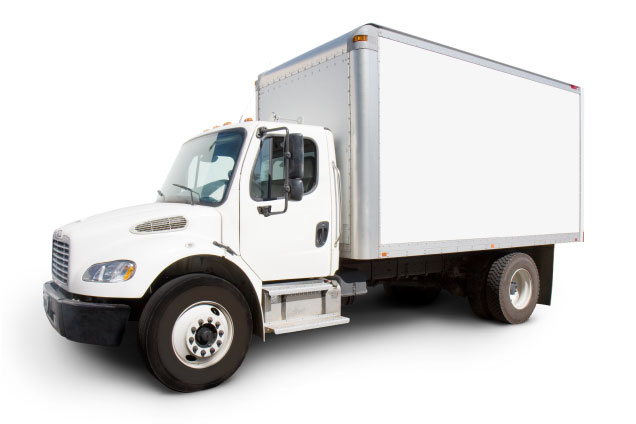How to Prepare a Freezer for Long-term Storage
Posted on 29/05/2025
How to Prepare a Freezer for Long-term Storage
If you plan to store your freezer for an extended period due to relocation, seasonal use, or temporary excess, it's crucial to ensure it's properly prepared. Failing to prepare a freezer for long-term storage can lead to unpleasant odors, mold growth, mechanical issues, and a reduced lifespan. In this comprehensive guide, we'll show you how to prepare a freezer for long-term storage step by step to keep your appliance in top shape and ready for future use.
Why Proper Freezer Storage Preparation Matters
A freezer is a significant investment. Preparing your freezer for storage isn't simply a matter of unplugging and moving it. Freezer interiors, gaskets, coils, and components need protection from moisture, pests, and environmental damage. Adequate preparation ensures that when you bring your freezer back into use, it operates efficiently, remains free of bad smells, and is in as good a condition as when you stored it.
The Risks of Improper Freezer Storage
- Mold and mildew growth if moisture remains inside.
- Unpleasant odors caused by old food particles or bacteria.
- Component rust and electrical damage due to excess moisture.
- Pest infestations that may damage wiring and insulation.
Avoiding these risks is simple if you take the right steps before storing your freezer.

Step 1: Clear Out and Defrost the Freezer
First, empty all contents from your freezer. Proper disposal, donation, or usage of items will prevent spoilage and odors. If your freezer has built up ice or frost, it will need to be defrosted.
- Remove all food and shelves: Take out every item, including removable baskets and drawers for separate cleaning.
- Unplug the freezer: Allow the appliance to naturally defrost. This usually takes 12 to 24 hours. Place towels around the base to collect melting ice and water.
- Speed up defrosting by placing a pot of hot water inside (door closed) to melt ice more rapidly. Never use sharp tools to chip away ice as this could damage the interior.
Cleaning Removable Freezer Parts
- Wash shelves, racks, and baskets in warm, soapy water.
- Rinse thoroughly and dry completely to avoid rusting.
- Set aside to reassemble after interior cleaning.
Step 2: Deep Clean the Interior
Before you store your freezer, a thorough cleaning is necessary. This step ensures bacteria, mold, and odors don't have a chance to develop while the appliance sits unused.
How to Clean Your Freezer Before Long-term Storage
- Mix a solution of 1 tablespoon baking soda per quart of warm water. Baking soda helps neutralize lingering odors and is food-safe.
- Wipe down every interior surface including walls, floor, and ceiling of the freezer.
- Don't forget interior corners, shelf rails, and rubber seals around the door or lid.
- For lingering odors, wipe with a diluted vinegar solution (1:1 vinegar to water) after cleaning with baking soda.
- Dry all surfaces completely using a clean, dry towel. Moisture left behind will promote mold growth.
Step 3: Clean and Inspect the Exterior Components
Proper preparation of a freezer for storage requires attention to the outside, too.
Don't Overlook These Parts:
- Door Gasket: Carefully clean the rubber seal with warm, soapy water. Rinse and dry. Inspect for cracks, mold, or stubborn debris.
- Exterior surfaces: Wipe down doors, sides, and handles. Remove dust or crumbs that could attract pests.
- Condenser coils: Use a vacuum attachment or coil brush to clear accumulated dust and lint from the coils. Clear coils improve efficiency and reduce potential fire hazards.
Once entirely clean, leave the freezer unplugged for continued drying time before the next steps.
Step 4: Air Out and Deodorize
- Prop the freezer's door or lid open slightly (about 1 inch). This is *the most critical step* to avoid odors or mold.
- Place a box of baking soda or a pouch of activated charcoal inside the compartment to absorb residual smells during storage.
*Leaving the door ajar is the single most effective way to prevent a stale, musty freezer after storage.* Use a rolled towel, small wedge, or special door prop to keep the gap in place.
Step 5: Secure for Storage
Once your freezer is clean and dry, consider the following before moving or storing it:
- Coil the power cord neatly and use a twist tie or velcro strap to prevent tangling.
- Tape removable shelves and drawers in place to avoid shifting during transportation.
- Use padding on corners and edges, especially if your freezer will be moved or will be stored in a place where people might bump into it.
If you're moving the freezer to a storage unit or garage, lift carefully with assistance to avoid damaging the compressor or feet. Keep the unit upright at all times (never lay it on its side) to prevent oil from leaking into the cooling system, which can cause compressor failure.
Step 6: Choose the Right Storage Location
The longevity of your freezer in storage depends on where and how you store it. Select a location that's:
- Cool and dry: Humid basements or leaky sheds may expose the freezer to rust and mold.
- Away from direct sunlight: Sunlight can damage exterior surfaces and heat the interior, increasing condensation.
- Protected from pests: Mice or insects are known to chew through wires or take up residence inside.
- Off the ground: Place the freezer on pallets or boards to avoid contact with condensation or water on the floor.
Outdoor storage should be avoided unless the environment is temperature-controlled, as extreme cold or heat can damage internal components and void warranties.
Step 7: Check and Maintain Periodically
If your freezer will be in storage long-term (several months or more), periodic inspection is important:
- Every 2-3 months, check for any signs of moisture, pests, or mildew inside and out.
- Ensure the door or lid remains slightly ajar for air flow.
- Refresh baking soda or charcoal deodorizers to keep odor away.
- Look for signs of rust or corrosion and clean promptly.
Regular maintenance ensures your freezer will be ready the next time you need it.
Tips for Bringing Your Freezer Back into Use
When you're ready to use your freezer again, reverse the storage process for optimal results:
- Remove any deodorizer and door props, and clean all interior surfaces with a fresh baking soda and water mixture.
- Inspect electrical cords and plugs for rodent damage or wear.
- Replace shelves, baskets, and accessories.
- Plug the freezer in and allow it to cool for several hours before adding food.
- Monitor for 24 hours to ensure it's running efficiently with no unusual noises or leaks.
Common Mistakes to Avoid when Preparing a Freezer for Storage
- Leaving moisture inside: This almost always leads to odors and mold.
- Not propping open the door: This is the fastest way to create a mildew problem.
- Forgetting to clean the coils: Dust buildup can reduce efficiency and cause overheating when the freezer is used again.
- Storing with food inside: Even so-called "non-perishable" items will spoil or attract pests.
- Laying the freezer on its side: Tranports must always be upright to protect the compressor.

Frequently Asked Questions about Long-term Freezer Storage
Should I cover my freezer in storage?
If your freezer will be stored in an environment where dust accumulation is a concern, a breathable cover can be helpful. However, never seal your freezer in plastic--trapped moisture can lead to rust and mildew. Use a cotton sheet or moving blanket instead.
How long can a freezer be stored safely?
With proper preparation and a suitable environment (dry, cool, indoor), a freezer can safely sit unused for years. The main risk is moisture and pests, not time itself.
Can a freezer be stored in an unheated garage?
Many freezers withstand storage in unheated garages, but very low or high temperatures can be harmful. Consult your freezer's manual for recommended storage temperatures, and avoid temperature extremes when possible.
What is the importance of baking soda in freezer storage preparation?
Baking soda absorbs and neutralizes odors without risking contamination, making it superior to many commercial deodorizers.
Conclusion: Keep Your Freezer Ready for Years to Come
By following these comprehensive steps, you'll ensure your freezer remains mold-free, odorless, and ready to provide maximum food preservation when you need it again. Knowing how to prepare your freezer for long-term storage protects your investment and saves money and hassle down the road.
- Thorough cleaning and drying
- Door props and odor prevention
- Safe, dry storage location
- Regular maintenance checks
Prepare your freezer the right way and enjoy fresh, efficient freezing power whenever you need it. Long-term freezer storage doesn't have to be stressful--with the right approach, it's simple, effective, and best for your appliance's longevity.





